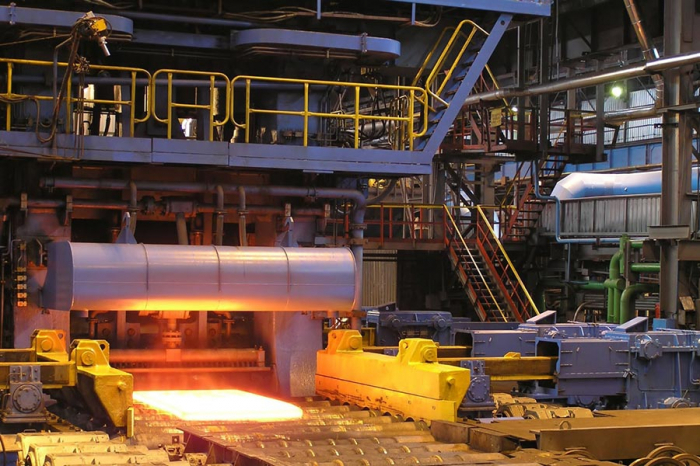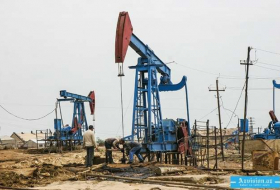Economist Elman Sadigov shared his views on these issues in an interview to AzVision.az.
- What international trends are there in the market for non-ferrous metals and what are the factors that determine these trends?
- Non-ferrous metals are exhaustible resources, like all other minerals. As the population grows, the development trend in the economies intensifies and as the industry develops further, the extraction and consumption of non-ferrous metals accelerate as well. The Earth does not have excessive or unlimited reserves of non-ferrous metals and they are exhausted after a certain period. However, the aforementioned depletion syndrome is not the only reason behind the recent price hikes for non-ferrous metals. The supply chain bottlenecks during the pandemic served as the main rationale.
If we specifically consider the prices of all non-ferrous or heavy metals – copper, aluminium, palladium, platinum, zinc, etc. – the trend we observe is that the exchange rate for all of them reached its peak in early 2020-21. What this means is that in some cases they increased by 80-100 percent, whereas in others they rose by 1.5-2-fold compared to what they were in 2017, ’18 and ’19. However, we are now observing a drop back trend of the peak prices. For instance, the aluminium prices have dropped, zinc and palladium as well. Some metals have tanked by 40-50 percent, others by 30 percent. This is due to gradual post-pandemic recovery of production and supply chains, as the economies slowly return to their regular course.
- A number of experts claim that the ‘green energy’ agenda will cause the reversal process you mentioned. The ‘green energy’ will increase the demand for these metals sharply, which will induce another price hike. How realistic do you think this is?
- New trends say that some metals will be required more than others will. What does this mean? What are the new trends? The resource or energy we will use in the near future is the solar energy. The material we apply in solar panels is the silicon. Due to the relative high cost of silicon, the smaller panels, mainly installed in households and greenhouses, use indium, gallium, selenite and copper. This means we need these materials more than others to produce solar panels. We are not particularly observing price surges for these metals just yet, as they have not been used as much so far. The calculations show that Earth has enough reserves of them. The extraction is also cheaper, as it is not a very difficult process.
The second trend is electric cars. Palladium, for example, was one of the most widely used and highly demanded metals until now, because it makes up most part of the catalysts we use in cars. However, electric cars do not have catalysts, which renders palladium unnecessary. Palladium is one of the rarest metals.
New trends emerge as a result. So which metals will we use for electric cars? Copper, nickel, lithium and cobalt are still used. That is, if you want to analyse the metals to be required for electric cars in the future, you will mainly look into these four elements. The world at present has no shortage of copper reserves. It is mass-produced and found in numerous countries. Chile is the largest copper producer. One-third of world production is in Chile, followed by the United States.
- The recent economic war between the West and Russia has raised the issue of demand for non-ferrous metals, employed in both hi-tech and military and space industries. Won’t it lead to a collapse?
- It will not. Here is the reason why it won’t. Firstly, if we are to look into the countries that produce metals, Russia does not rank neither first nor second in production of most of them. True, it is rich in resources. But other countries are more advanced in terms of extraction, processing and sales of these metals. China is the leader when it comes to most of them. As technology, industry and exports evolve, China is becoming more aggressive in extracting and processing the metals in its territories, sensing the demand for these metals. Over the last 30 years after the Soviet Union collapsed, Russia can no longer boast rapid industrial development compared to China or other developed countries. The demand for these metals is not that crucial for Russia, as neither the motor industry nor others are evolving. Russia has an established aluminium production and it is one of the most expensively combined metals. Aluminium smelting requires a lot of energy. Therefore, countries that currently have access to cheap energy can develop the aluminium industry. The main reason Russia has an evolving aluminium industry is the relatively cheap energy. This is related to nuclear energy. But Russia cedes to other countries in production of other metals.
The Republic of South Africa sets the pace in extraction of almost all metals. South American countries, specifically Chile and Argentina, and the United States are active players. Russia has abundant metal reserves. It is almost the only country in the world that has all the elements in the Mendeleev Periodic System. But how do you extract these elements? How can you utilize them? How can these non-ferrous metals contribute to industrial development?
- What prospects do the reserves in Azerbaijan promise in regards to aluminium and copper? What innovations and trends is Azerbaijan currently displaying in terms of their production, processing and sales?
- Apart from Dashkasan, our main ore deposits are in three directions: Ordubad, Karabakh and Balakan-Zagatala. Azerbaijan’s ore deposits mainly contain valuable materials, such as copper, cobalt and lead. But the fields in Azerbaijan are not as replete as others in the world. We are a fairly small country. Even if we list our non-ferrous metals for sale as raw materials, we will not be able to earn much. Therefore, I believe those metals will be processed at refineries yet to be built. This is the first stage, which is an absolute must. The second stage may include incorporating them into our domestic industry, creating a value chain. If we do not build one, we will not be able to profit through solely marketing copper, aluminium and other metals we extract as raw materials. This is a crucial point.
Refining and processing metals such as copper, zinc or nickel do not come at a high cost. Aluminium smelting has high-energy requirements, but I assume, we are moving towards alternative energy. We are also attaching greater attention towards alternative sources of energy in Karabakh economic region. ‘Green energy’ is of great importance for the industries there.
- Some experts insist that producing non-ferrous metals is in fact not that ecologically convenient and simple. They believe it has a serious environmental impact…
- I would personally want to put a lid on those ore deposits and keep them shut. The economic value those deposits might bring is not that great. Maybe in the future we can benefit from them more than we can now, employing more advanced technology and technical capabilities. The extraction of ore and non-ferrous metals does not lead to an environmental disaster per se. The deposits are backfilled after mining, just as they fill oil beds with water after extraction. Their consumption, whereas, is a completely different story. What I want to say is that processing and consumption are much more harmful for nature than their extraction. Not extracting is also not a solution, because the time we live in poses an absolute demand for non-ferrous metals. I think there will simply be no life without them. A large number of people depend on them to improve their living conditions. Giving them up is not an option at this stage. Instead, we must compensate for the damage to nature inflicted during extraction, processing and consumption. Let’s suppose, we must calculate how much the earth is polluted and heated as a result of copper, aluminium and nickel processing in a year. We must estimate how much urban greening we need, what measures we must take and which filters we should use to release less toxic gases into air based on these calculations. A more precise calculation and application of these measures is a more viable solution than giving up non-ferrous metals altogether.
Sahil Isgandarov
AzVision.az
More about:
















































